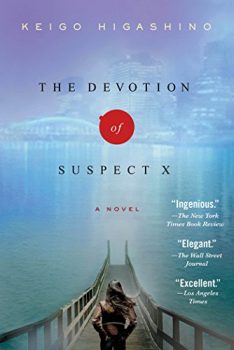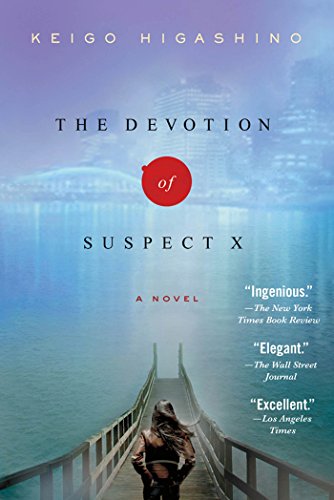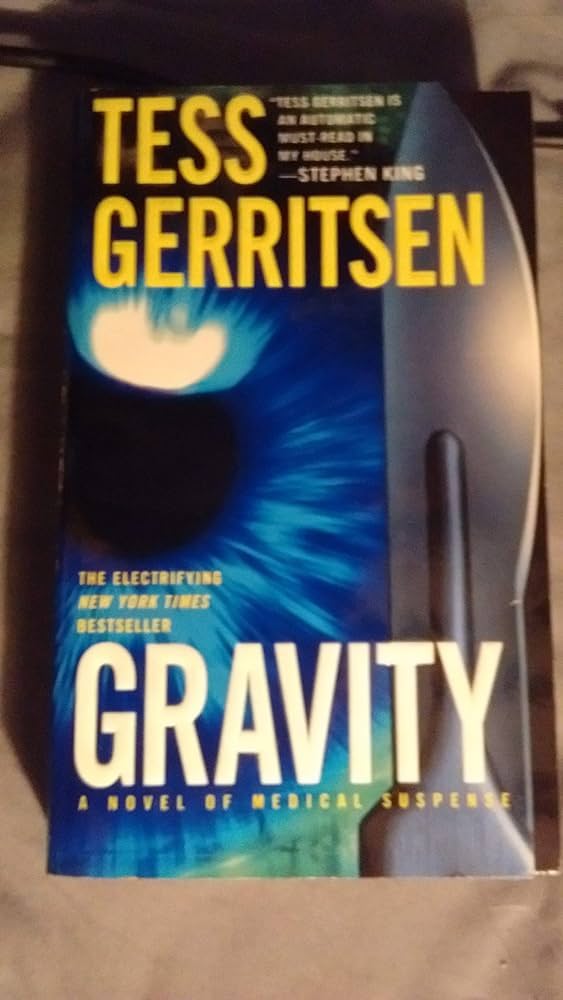
Something is often lost in the translation of foreign fiction. If the translator has done a poor job, the prose comes across as ragged or word choice sometimes puzzling. Neither of these problems crops up with the translation from the Japanese of Keigo Higashino‘s novel, The Devotion of Suspect X. However, while it’s clear in context who Suspect X must be, the person is never identified in the text. That suggests to me something’s missing from the English edition of this otherwise workmanlike detective novel. And while American critics (according to the cover art) have identified the book as “ingenious,” “elegant,” and “excellent,” this Japanese detective novel is grounded in far-fetched coincidences and is less than satisfying as a result.
Suspect X is the first of three novels in Higashino’s Detective Galileo series. The conceit on which this novel is based is that the so-called “Detective Galileo” is actually Manabu Yukawa, a “genius” member of the physics department at Imperial University. Yukawa’s friend and former college classmate, Detective Kusanagi, consults with him about difficult cases from time to time. And, in a less than believable coincidence, a high school math teacher named Ishigami (who is no doubt Suspect X) was also a student at Imperial University at the same time as Yukawa and Kusanagi. It’s all a little too neat. After all, they all live in Tokyo, the world’s most populous city, that houses nearly 38 million people. Oh, and Ishigami is also a genius.
The Devotion of Suspect X (Detective Galileo #1) by Keigo Higashino (2011) 305 pages @@@ (3 out of 5)
Was there a crime in this Japanese detective novel?
So, here’s what happens . . . A divorcee named Yasuko Hanaoka lives with her eleven-year-old daughter in an apartment next door to Ishigami. When Hanaoka’s estranged husband shows up unexpectedly in her life after she had carefully hidden her whereabouts from him, Hanaoka and her daughter are forced to kill him in self-defense when he attacks the daughter. Ishigami, who has a crush on Hanaoka, enters the scene and takes charge, instructing the two women on how to avoid being caught by the police. And that introduces another puzzle: since they killed the man in self-defense, why didn’t they just report the incident to the police? Is Japanese law so different from American that they could be convicted of murder even if the ex-husband had a demonstrated history of domestic violence?
Well, no matter. The whole point of this story is to set up a war of wits between the two “geniuses.” And since this is the launch of a series about Detective Galileo, we can be sure the forces of law and order will prevail. Unfortunately, the result is a very unhappy ending — an ending that also comes across as contrived.
For additional reading
I’ve also reviewed a much better example of Keigo Higashino’s detective novels: Newcomer, the seventh book in his Police Detective Kaga series. The review is at A Japanese Sherlock Holmes and Harry Bosch rolled into one. And earlier I reviewed Barry Lancet’s first Jim Brodie story, Japantown, at A thriller grounded in deep understanding of Japanese culture.
You might also enjoy my posts:
- Top 10 mystery and thriller series;
- 20 excellent standalone mysteries and thrillers;
- 5 top novels about private detectives; and
- Two dozen outstanding detective series from around the world.
For an abundance of great mystery stories, go to Top 20 suspenseful detective novels (plus 200 more). And if you’re looking for exciting historical novels, check out Top 10 historical mysteries and thrillers reviewed here (plus 100 others).
And you can always find my most popular reviews, and the most recent ones, plus a guide to this whole site, on the Home Page.


























